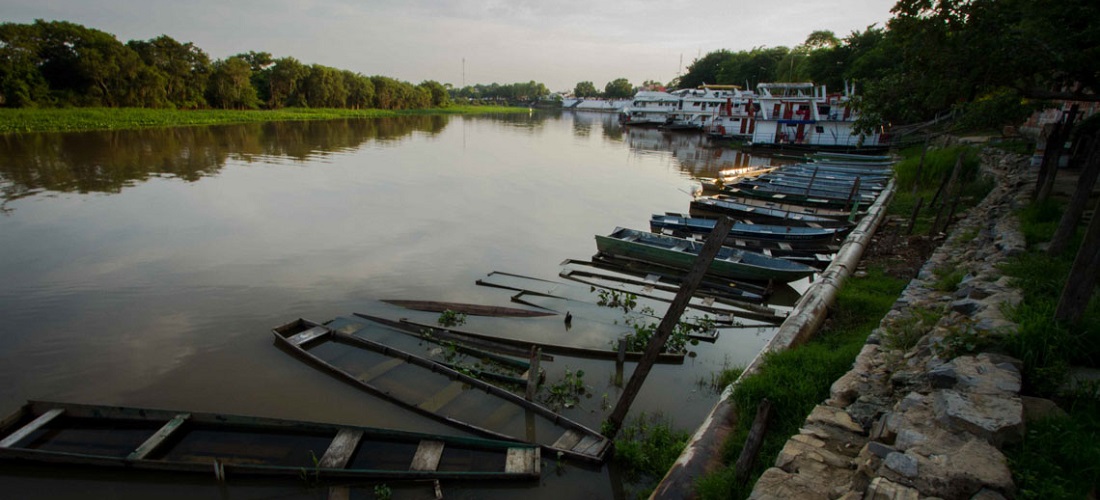
La Niña to affect river navigability after June
Mar, 23, 2022 Posted by Gabriel MalheirosWeek 202212
The Mato Grosso do Sul Weather and Climate Monitoring Center (Cemtec) indicated that the waterway system in the state might soon experience the impacts of the dry season again, impacting river navigability.
Data released this month indicate that the La Niña effect will continue until May, causing below-average rainfall for at least two months.
The drought that began at the end of 2019 continued into the following years, resulting in a cascading effect.
This is the third consecutive year of drought in Mato Grosso do Sul. The reduction of rainfall caused a draft reduction in the Paraguay River, the most important fluvial system in the state, creating barriers to commercial navigation in 2020, 2021, and, most likely, 2022.
The forecast indicates that La Niña may continue until May (80%), probably influencing weather conditions in autumn. As long as La Niña continues ranging on, cold air masses will be common. Thus, rains should be below the climatological average for April-May-June,” detailed Cemtec.
The La Niña effect is an oceanic-atmospheric phenomenon that cools the waters of the Pacific Ocean and, consequently, generates changes in the patterns of atmospheric circulation that impact the rainfall regime.
According to companies operating in Corumbá and Porto Murtinho, the minimum level for navigation must be 1.5 meters.
The Ladário region, home to Granel Qumica, Brazil’s Center-West region main terminal, is one of the points on the Paraguai River where the navigation draft has been the most affected in the last three years or so.
Even after more consistent rains in Cáceres, where the river’s mouth is located, the draft only allowed for the safe resumption of commercial navigation in early February when the additional volume of water reached the border between Brazil and Bolivia.
Nonetheless, the Navy reports that the water level is still lower than in previous years, except for 2020, when there was a more severe drought.
Bolivia’s main waterway for product transportation is the Paraguay River. Iron ore is the primary cargo carried there, but it also transports fuel.
La Niña’s effect on navigability
For now, the forecast of scarcer rain is not preventing companies from carrying out transport operations even though they are on alert.
If it weren’t for weather and river level effects, freight transport would continue to grow at a faster rate, according to a report from the National Waterway Transportation Agency (Antaq).
A report from the federal agency indicated that, even though the rivers were at their lowest levels in 2021, Brazil saw an increase in the flow of goods during operational periods.
“Facilities in the Center-West region handled 3.9 million tonnes in 2021 and, as a result, grew 25% compared to 2020. The private terminal Granel Química in Ladário, which had in part of its operation affected by the drought, handled one million tonnes in the year, an increase of 171.4%,” pointed out Antaq.
With Cemtec’s prediction that the river will hardly increase its level, in addition to issues in the Brazilian and international economy, this year started with lower vessel traffic than usual at the region’s main port.
Antaq reported that, in January and February, the port of Granel Química recorded a drop of 93% in the volume shipped (11,870 tonnes).
The other port in the region, Porto Gregório, located in the municipality of Corumbá and used exclusively by Vale to ship iron ore, took a different course of action than the other terminal.
Because of the river’s low draft, the company chose to use vessels with a lower transport capacity. Despite this strategy, there was a 46.85% reduction in the volume shipped (194,631 tonnes) at the beginning of this year (January).
Source: Correio do Estado
To read the full original article, please go to:
-
Ports and Terminals
Mar, 07, 2021
0
Turnover at Docas do Rio up 228% in January YoY
-
Meat
Jul, 10, 2023
0
Brazil’s January-June pork exports rise 16%
-
Trade Regulations
Sep, 23, 2020
0
Measure approved to exempt EPZ companies from 80% gross revenue target
-
Sugar and Ethanol
Jul, 27, 2020
0
Brazilian daily sugar export average grows 85% in July YoY

